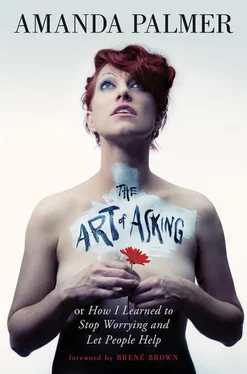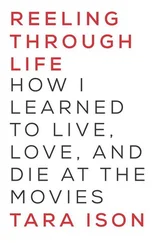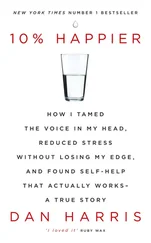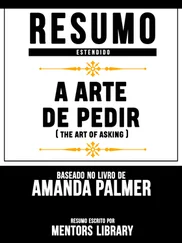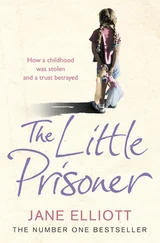I can’t believe they have the brass neck to ask for others to finance their dream. Everyone has dreams, you just have to work towards them and not expect others to foot the bill .
Someone actually commented (I’m not kidding):
GET A JOB
They raised only a few hundred dollars, and from the interviews it sounded like they actually had expected total strangers to get excited about their dream. If they’d raised thousands of dollars from friends and family who were happy to have a formal mechanism through which to help them, it wouldn’t have been a sad story at all. It would have been a cause for celebration. But the story was kind of sad because they didn’t realize how futile their asking was.
So when I saw the email from the artist needing stomach surgery, there was a part of me that cringed, fearing that he might be asking an invisible crowd, crowdsurfing into an empty room. I sighed and shared the link, ready to be disappointed.
Within twenty-four hours, he’d made his goal of $10,000 from what looked like a tight-knit community of forty or fifty friends and family.
And as I looked at his success, I realized that I had been thinking like the trolls, standing on the periphery, judging.
Who can know? He risked, his crowd helped. He asked, he got. There was no reason for me to be skeptical. The only people who can really judge if a request is fair are the ones being asked—the ones who have the relationships are the ones who understand the complexity of the situation.
Unfortunately, some people try to use crowdfunding not understanding this concept, hoping that somehow there’s magical “free money” out there. There isn’t .
Effective crowdfunding is not about relying on the kindness of strangers, it’s about relying on the kindness of your crowd.
There’s a difference.
• • •
When I came across the work of Walt Ribeiro, a composer/arranger on YouTube, it delighted me: he takes current pop songs and arranges them orchestrally using computerized instruments. He’d uploaded his arrangements of Adele, Radiohead, and MGMT and they’d gotten hundreds of thousands of views, but as often happens with popular digital content creators, the hit tally wasn’t translating into real money. Walt wanted to make a record with a real orchestra but couldn’t figure out how to make it happen.
I had another fancy show coming up with the Boston Pops Orchestra, and I reached out to Walt over Twitter, got his email, and asked if he would be game to do an arrangement of “Poker Face” by Lady Gaga for the concert at Symphony Hall. He was beyond game. We chatted about crowdfunding; we became friends. His arrangement rocked.
When Walt emailed me a few months later excitedly telling me about his new Kickstarter campaign, I happily plugged it and thought that he would easily achieve his goal of $7,000. I twittered about it, I blogged about it, I told the story of this nice arranger/orchestra dude who was embracing the future of music and trying to Kickstart his orchestra album.
His Kickstarter didn’t get funded. It more than didn’t get funded: it only raised $132 of a $7,000 goal, from three backers. I was one of them.
Hundreds of thousands of people had enjoyed Walt’s work on YouTube, but he hadn’t cultivated a long-term relationship with them, he hadn’t yet built a bridge of exchange between himself and his potential supporters.
There isn’t always a crowd from which you can fund. Sometimes you just don’t know until you jump.
It also appeared that my enthusiasm for somebody else’s project held little or no sway with my own fans. Some clicked the link, they looked, they decided it wasn’t for them, they moved on. I could boost the signal, but I couldn’t build the bridge.
Which, as I thought about it, wasn’t a bad thing. It made me consider one of the reasons I loved my fanbase so much: they are wholly independent and have their own unassailable, discerning tastes. They weren’t looking to me as a leader to follow blindly, there to dictate their choices. They were looking to me as a connector, a coordinator, which was the role I wanted.
Standing above everybody is lonely—I knew that from experience. I liked the idea of being with everybody.
(Two years on, Walt is still working on his arrangements and just launched a Patreon.com page. He has eighteen backers. I’m one of them.)
• • •
My friend Sxip Shirey is a crazed multi-instrumentalist composer with a huge white Albanian Afro who used to tour with small punk circuses as their live one-man band. His music is absolutely entrancing, but it’s miles from mainstream. Sxip’s been touring for almost twenty years as an MC and impresario: he’s a connector, a carny, a lover of food, whiskey, randomness, people, and laughter.
He never landed a record deal with a label, but he wanted to make a high-class official recording of his music, so he decided to crowdfund. He surpassed his goal of $20,000 with the help of 531 backers. Most of these people were Sxip’s friends and fans from New York, and a few hundred people from other states or countries who had seen him on tour over the years. I’d estimate that Sxip had, at one time, probably shared a drink with at least 37 percent of his backers. They just wanted to help him make his record and… Be Sxip.
Sxip’s Kickstarter proved a theory I’d had, but never tested.
Beyond the basic CD option for $20, he didn’t give many details of what he was going to give the crowd. He just asked them to trust him.
These were the descriptions of his Kickstarter backer levels:
Pledge $1 or more: All backers will get SOMETHING!
Pledge $20 or more: You will receive my new CD with beautiful art. I will sign it and you will be SO PLEASED at the surprise gift that is ALSO sent with it. It will be worth it!
Pledge $50 or more: You will get my new CD and OH MY!! There are TWO extra surprise gifts in the same parcel! You have a lot to listen to now! Call your mom or other family member. This is a day to remember!
Pledge $1,000 or more: Damn, oh shit… just you wait… be calm beating heart… oh… oh yes… oh YES… JUST YOU WAIT, seriously. My hands are sweating just thinking about. Seriously.
Pledge $2,000 or more: Call me, it’s important. we need to plan this out. It won’t be simple but it will be worth it!
Pledge $3,000 or more: Oh My God, for YOU, I’m gonna… BRING… DOWN… THE… THUNDER!!!!!
He reached a total over $21,000. Most (350 people) bought the $20 package and another seventy-six bought the $50 package, while fifty-nine bought the $100 package. Two people bought the $1,000 package. [8] I emailed Sxip to ask him what those people wound up with. In one case, at the request of the backer, he arranged a piano composition orchestrated by the backer’s wife, and performed it for them live at Joe’s Pub in New York City. I’m sure they got their money’s worth.
My theory: one of the biggest reasons people usually want to help an artist is because they really want… to help an artist. Not get a fancy beer cozy. If they make the decision to help, they will help at the level at which they are able, no matter what token, flower, or simple thank-you awaits them at the other end.
I emailed a pal at Kickstarter to see if they had any hard evidence to support this, and indeed, they had the numbers: Since Kickstarter began, 887,256 backers have asked for the artists to refrain from sending them any kind of reward—which represents a little over 14 percent of their user base.
Sometimes people just want to help. You never know until you ask.
• • •
The night my Kickstarter campaign closed, at the stroke of midnight on May 31, 2012, I threw a free celebration party in Brooklyn. I announced it ninja-style on Twitter and on the blog the day before. A few hundred people gathered in a parking lot with a rented sound system, pizza, booze, and spontaneous circus performances, and we counted down the final hours in style.
Читать дальше
